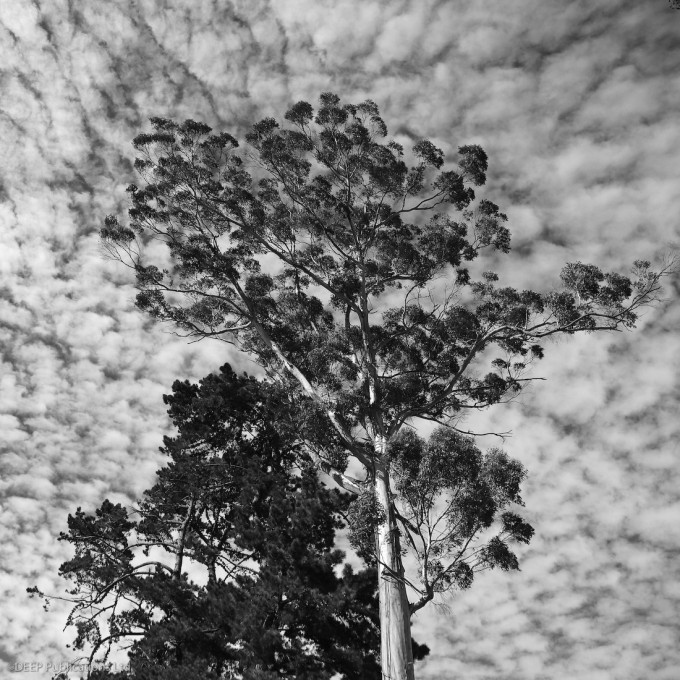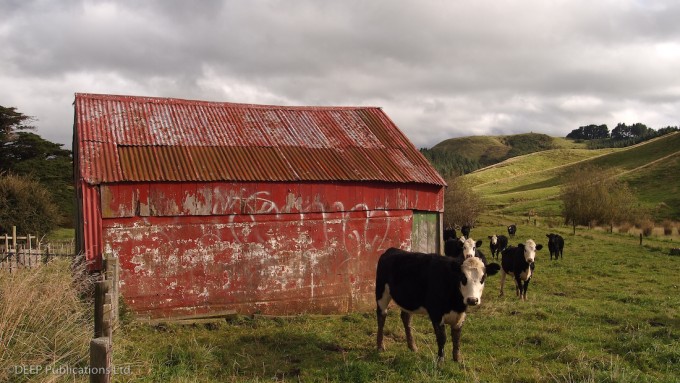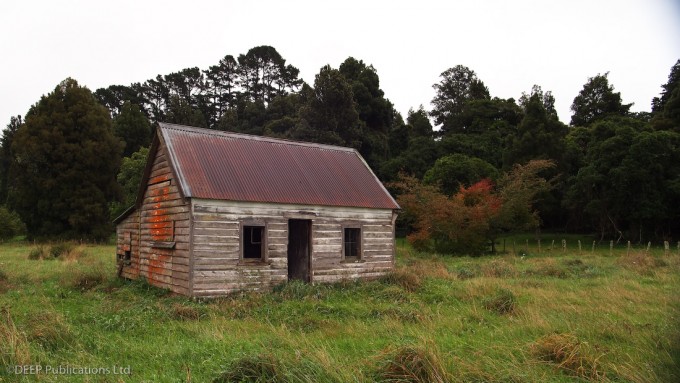Hi Steve,
First of all, a big thank you for your site and your significant contribution to the world of photography. I like how you encourage photographers to be real and to enjoy the experience, without getting hung up on numbers and statistics! I also like how people can be super-enthusiastic if they like a camera and, conversely, just say if they don’t like one without anyone getting nasty. So refreshing!
May I make a tiny contribution from a recent experience?
When micro-four-thirds cameras turned up, I was very excited. Much of my photography is opportunistic, which means I must have a camera on me almost all the time. Because a decent portion of those opportunities come up when I am working in the bush, I was in a constant conflict between big cameras with good image quality and small ones with mediocre image quality (though I have plenty of fine images taken with those lesser cameras – they were definitely better than nothing at all!). Micro-four-thirds, particularly the Pen series, seemed like a dream come true.
I grew to love the little Olympus EP1 that I finally settled on, once the prices had come within reach. I bought and sold a number of lens, ending up with the much-underrated and wonderful little 17/2.8, the versatile 14-150 zoom, the Noktor (=SLR Magic) Hyperprime 12/1.6 and an adapted Pen F 40/1.4. I was pretty happy with this combination (though was trying to get a better long lens – the 14-150 was great up to 50mm but quality dropped off beyond there). I have many, many photos from these that I am more than happy with. I was even happier with the photos from the EP1 and adapted ZD12-60 but that wasn’t exactly a small package. Compromises…
Then the thing we dread happened. I bent over to pat my dog one afternoon and heard the dreadful clunk of a camera falling out of my bag and hitting the deck. While everything looked fine, the display told me there was a problem with the IS system. The camera still worked if I turned the IS off but the stabilisation was gone, a real shame because I found it super-effective. Ah well.
Worse was to come though. Reviewing my images a while later, I noticed severe vignetting on one side! Yup, the sensor had moved and was jammed to one side. I sent it off for a repair quote and the bad news was it would be cheaper to buy a new EPM1 body. Black despair!
At the same time, I finally decided I couldn’t afford to upgrade my Olympus DSLR and would move to another brand. Suddenly, my whole camera arsenal was up for review. For a long time, I thought I would replace the EP1 with the new EM5 but they were taking forever to come to New Zealand, so I looked around. I played with a couple of NEX7s, thought about another Pen, tried to find a Samsung, gasped at the price of the Nikon 1 cameras, until I had an epiphany. Quite suddenly, out of the blue, I realised I did not want two system cameras! I didn’t want to be constantly deciding what lens to put on my small “bush” camera and I didn’t want to be investing in lenses for two systems. Because I sometimes make some money from shooting weddings, I really needed to keep an SLR, which would also be good for wildlife, eventually getting a modest Canon 60D.
The solution for my bush camera was to replace my EP1 with the truly excellent little Canon G1X. Superb zoom lens and sensor in a compact package that still manages a viewfinder and flash, bullet-proof autofocus – it has proven to be excellent for my needs.
So, what about the broken EP1? Well, I loved that camera and couldn’t bear to sell it for peanuts, so I decided to keep it and sold off the two AF lenses. Of course, I couldn’t bear to sell those MF lenses either, as they are as rare as rocking horse dung and who knows when I might get another m4/3 camera?
So, there I was one day, with a broken EP1 body and two absolutely gorgeous manual lenses, when it struck me that I could still use this combination if I just cropped the vignetting out. That meant only shooting in 16:9 or 6:6 ratio. Suddenly, photography lost its intensity and became fundamental again. Wandering around with just two manual-only lenses (useful 24mm and 80mm equivalent focal lengths), restricted to two unusual aspect ratios, I found each photo became more considered, more relaxing and, well, just more fun! Not for everyday use, maybe, but when I get a bit jaded, I can just pull out what feels like my old classic camera(!) and lenses and go and enjoy the experience. It’s been wonderful.
I thought I’d share this because it might inspire people who are on a budget to think a bit laterally and make do with what they can get. I’ve included four photos (I know, you say only three but I figured two from each lens was fair). The two buildings are taken with the 12/1.6, the tree/sky and plant shots are taken with the 40/1.4. Don’t ask what the apertures were!
Hope someone finds this inspiring! All the best,
Don Ravine.






I appreciate all the positive comments, thanks everyone. Good on ya, Steve, for making it possible for photographers to share like this!
Sunny day out there – time to get off the ‘net and actually use a camera….
It was a pleasure having read this article ..I have followed this blog for a long time and I think that every day we learn more, thanks Steve for creating the blog ..
Aaaaaah E-P1
I been partying with Nex5, ive done enough of the partying, i just want to return home to my ole faithful E-P1
I know what you mean. When I bought my EP1, I looked hard at the NEX5 as well. My flatmate bought the NEX and was always jealous of the images that came out of my EP1. He finally sold it and went back to using his lovely Sony V3 as a backup to his A900 gear.
I love my EP1. It feels so good and the images it takes are stellar. If only it had a little viewfinder in the corner like the NEX7 it would be close to perfect for me!
First time i held E-P1 i just knew.
When OMD was announced i was so into it. At first opprotunity tried it out, it left me with a feeling smilar to Nex : super technical camera yet in a way not connecting to me in a creative spirit way.
A great post.
Working with what you can have/afford, is probably just as satisfying as working with a brand new expensive camera.
I never go anywhere without a camera either, and quite often it’s a little Oly point and shoot. It doesn’t take very good pics except at ISO 100 in good light, but the funny thing is, out of the 2800 ‘keepers’ I have on file, over 400 of them were taken with that little beast.
I fully understand that. For a while I carried a tiny Minox with a great lens but a sensor so bad you’d swear it was made from cardboard. Yet one print from that camera sold for more than the camera cost and I have plenty of other good photos from it. I actually wonder if my iPhone is going to be the spiritual successor to that Minox!
Thanks for the kind comment.
Really nice shots, and I don’t mind the HDTV format!
In my early twenties I used to carry two Minox 35s with me everywhere I went, in my younger days, till they wore out. Then came a number of compacts, analogs and digitals, maybe a new one every five years, or so.
One of these compacts that still is useful, is the Olympus C-8080, a wonderful camera, with the best lens, till then, on any compact (superb zoom), but it has its flaws (otherwise comparable in many ways with the Olympus XZ-1), but far bulkier, being a DSLR lookalike.
Then I progressed to Pentax DSLRs, but that’s another story.
I used to have some money to spend, and I do not have it any more, after semi-retiring, so spending on cameras is now much more restricted.
Now it is usually carry with me my Nikon V1, with the FT1 adapter, and a F Mount Nikon lens (usually the 35), which has become my normal kit while on the move, replacing my old, much heavier DSLR kit.
If I have room enough, I might add the well worn NEX-5N with its Sigma 19. With the Sigma on it is totally non-VR/SR/OIS, so it is back to basics!
Both the 19, and the 35, are excellent, sharp lenses, but while the NEX’s sensor is APS-C-sized, the V1’s is much smaller. The latter is CX-sized (same size as the RX100’s, so not too good in bad light! And the V1 (hopefully coming with the V2) can’t do panoramas, which I love to do out in the wild. If I hope to come across wild animals, say moose, I replace the 35 with a longer lens, of course.
One disadvantage with small sensors is their need of light, a lot, so I also bought a basic Nikon DSLR, the D3200 (similar to your 60D, I guess) to use with the F Mount lenses (some very old, very worn). So if there is room, it often comes along for the ride. The sharp guy might comment that there is Nikon-NEX adapters, so why not use that, saving on the cost of the D3200?! But these adapters are totally manual, so can’t use AF, nor VR, which is so nice to have, if available! With the old, manual Nikon lenses such an adapter for the NEX is really nice, though, so I confess, I have one!
As an added bonus I can then use these Nikon lenses in their normal mode, so to speak, so the same lens can both be used as a wide, and a short tele, depending on which camera is attached to the lens. For a little extra bulk and weight, that is. But I very seldom switch lenses while out in the wild,
Next step would be adding a D600, but I have to save for some time to get it!
Sorry for the slack editing of my message “Now it is usually carry with me” should have been “Now I usually carry with me”
Thanks for the compliment. I know that feeling of trying stuff all the time to make it work for you and all the thinking that goes with it. Drives me nuts!
Great post, nice job Don
Wow, your photos are awesome, especially the first. The second one is very Atom Heart Mother-esque. Well done!
Gee, thanks. Though I confess I have no idea what Atom Heart Mother means…
I’m not sure what’s meant by that either, but I like the way all the cows are staring right at you. Great colors too.
Pink Floyd: http://tinyurl.com/8ntgjhl
Whoa. “love this site”. I do not live it.
And the weird emoticon does not do justice to my simple iPhone squiggles.
Oh well.
Carry on.
“Rocking horse dung”! That alone is worth the read and this is why I live this site.
Wonderful colloquialism.
Praise the Lord and pass the ammunition.
;-)~
Don, what a great story, it was like I was there. Great job crafting solutions, and great output. Thanks for sharing. Really nice shots, the first picture really sets me free.
I agree, it sets you free!
Thanks people!